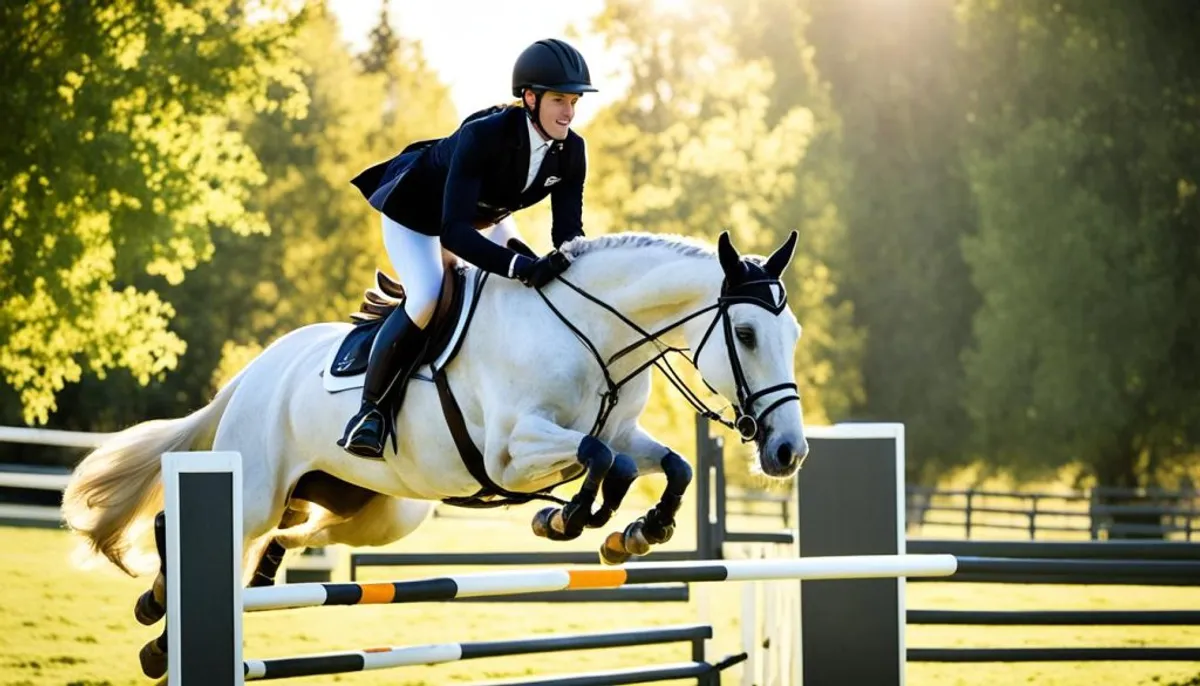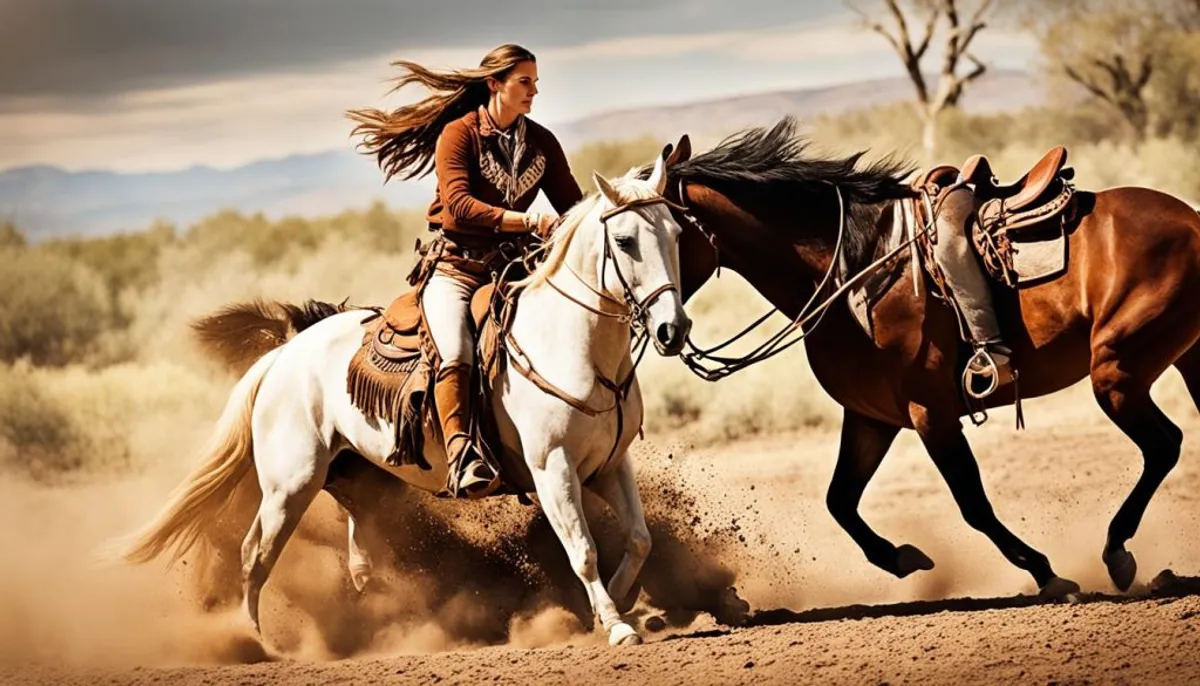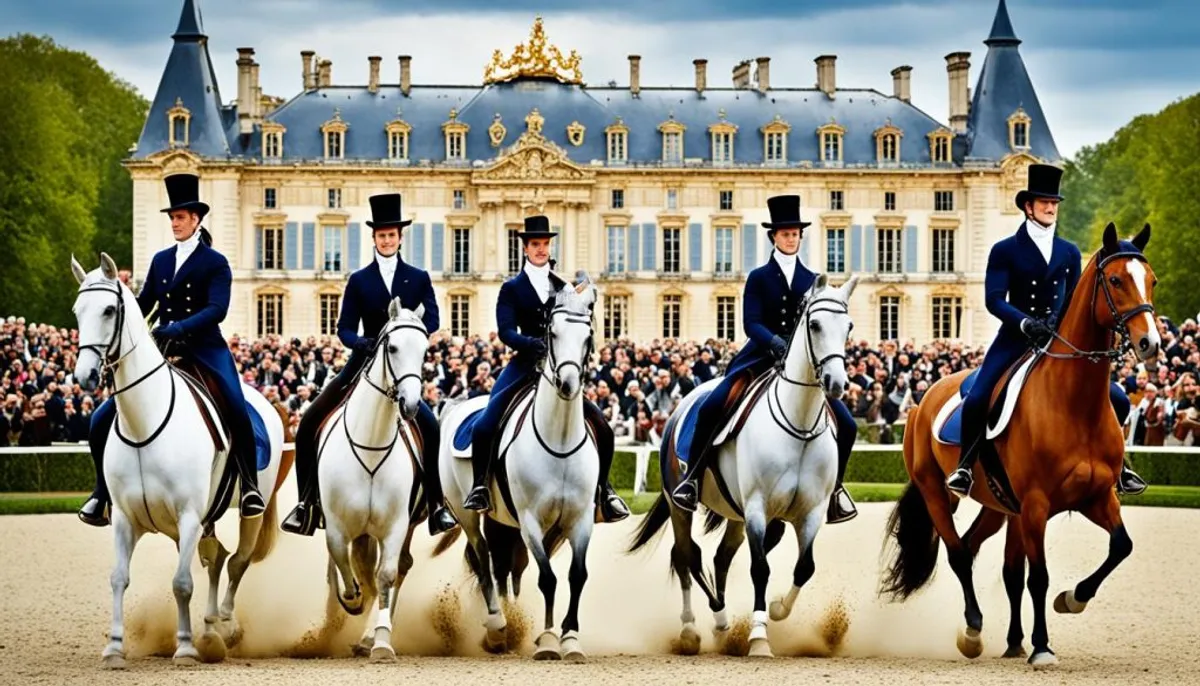Recent archaeological discoveries suggest that the first horsemen were ancient nomads. This practice gave them an advantage in moving across Europe. Neolithic skeletons found in Hungary, Romania, and Bulgaria show signs of stress related to horseback riding.
Most of these skeletons belong to the Yamnas, a people who left Eastern Europe about 5,500 years ago. Five of them have spinal injuries and a denser pelvis. These signs indicate that they rode horses frequently.
These remains are the oldest traces of horseback riding discovered.

Main Lessons
- The first horsemen were likely nomadic peoples from Eastern Europe around 5,500 years ago.
- The discovered skeletons show characteristic signs of physical stress related to horseback riding.
- These remains constitute the oldest traces of horseback riding practice ever discovered.
- Horseback riding gave these nomadic peoples a competitive advantage for their movements.
- The origin of horseback riding dates back to Prehistory, long before its development in ancient civilizations.
Definition of Horseback Riding
Horseback riding is an activity that connects man and horse in a harmonious dance. It is defined as the "action of riding a horse." This involves specific techniques and equipment to control speed and direction.
Origins of the Word "Horseback Riding"
The word "horseback riding" comes from the Latin equitare, meaning "to ride a horse." It transformed into equitatio, the art of riding a horse according to rules. The origins of the word horseback riding highlight the essence of this ancient practice.
Horseback Riding: Art, Work, or Leisure
Horseback riding can be a combat, a job, an art, a sport, or a leisure activity. It combines the interaction between the rider and their mount, respecting their abilities. It can be artistic horseback riding, work-related horseback riding, or leisure horseback riding.
| Purpose | Examples |
|---|---|
| Combat | Military cavalry |
| Work | Transport, harnessing, guarding, breeding |
| Art | Dressage, equestrian shows |
| Sport | Horse competitions, racing |
| Leisure | Riding, hiking |
The First Horse-Riding Peoples
The earliest signs of horseback riding date back to Crete in the 2nd millennium BC. This is where we see the first horsemen. Then, around 1730 BC, the first horse-riding peoples appear, with the arrival of the horse in Egypt by the Hyksos.
The 7th century BC sees the arrival of the Assyrian archer horsemen and the Scythian horsemen. The latter come from the northern steppes. In the 3rd century, the Celtic horsemen appear in Eastern Europe. By the 2nd century, we see Indian horsemen and Numidian horsemen using a simple halter.
By the end of Antiquity, in the 4th century AD, the Sassanid archer horsemen achieve great mastery of traditional horseback riding. Man invented horseback riding for hunting and combat.
| Era | Horse-Riding Peoples | Characteristics of Horseback Riding |
|---|---|---|
| 2nd millennium BC | Crete | First representations of horsemen |
| 1730 BC | Hyksos | Introduction of the horse in Egypt |
| 7th century BC | Assyrian archer horsemen, Scythian horsemen | Appearance of ancient horseback riding |
| 3rd century | Celtic horsemen | Presence in Eastern Europe |
| 2nd century | Indian horsemen, Numidian horsemen | Use of the halter |
| 4th century AD | Sassanid archer horsemen | Perfection of traditional horseback riding without stirrups |

In summary, man invented horseback riding for hunting and combat. This gave rise to the first horse-riding peoples, ancient horseback riding, and traditional horseback riding.
Who Invented Horseback Riding
Recent discoveries show that the Yamnas, a nomadic people, were the first to ride horses. They came from the plains of Eastern Europe about 5,500 years ago. This innovation gave them an advantage for their migrations.
Advantages of Mobility on Horseback
Mastery of horseback riding helped the Yamnas explore new lands. They could thus expand their territory more easily. It also gave them an advantage in conflicts and trade.
Role in the Expansion of Indo-European Languages
The language of the Yamnas, Proto-Indo-European, influenced many Indo-European languages. The word éḱwos gave rise to the Latin equus, meaning "horse." This is an example of the impact of their language.
The invention of horseback riding by the Yamnas was crucial. It facilitated mobility and the spread of Indo-European cultures and languages.
Evolution of Horseback Riding in Europe
Horseback riding has been very important in Europe, especially in ancient Greece and the Roman Empire. These peoples adapted the horse to their needs. Horseback riding became an art, a job, and a leisure activity.
Horseback Riding in Ancient Greece
In Greece, horseback riding was highly valued under Pericles. He increased the number of horsemen in Athens. Experts like Simon of Athens and Xenophon spoke about horses, their purchase, and their training.
Horseback Riding in the Roman Empire
The Roman Empire used cavalry to conquer new territories. Horseback riding was an art, a job, and a leisure activity. The Romans used horses to extend their influence in Europe.
The horseback riding of ancient Greece and the horseback riding of the Roman Empire laid the foundations for horseback riding in Europe. They influenced the evolution of horseback riding for centuries to come.
Horseback Riding in the Middle Ages
The Middle Ages saw horseback riding grow, especially with cavalry. Knights and horsemen demonstrate the importance of horseback riding. It is an essential art, both for war and for society.
The horseback riding evolved significantly during this time. Training and combat techniques improved. Knights and their horses formed a powerful duo, symbolizing strength and prestige.
Horseback riding became a martial art and a sign of prestige. Squires and pages learned to ride well. They mastered their mounts with agility and precision.
Horseback riding diversified for the nobility and aristocracy. Jousting, tournaments, and horse races became spectacles. They showcased the importance of horseback riding in medieval culture.
The Middle Ages is a key period for horseback riding. It transformed it into a complete art, military, social, and cultural.
Development of Classical Horseback Riding in France
In France, classical horseback riding progressed significantly from 1500 to 2000. There are four major periods: the old Italian horseback riding, the school of D'Auvergne, the bauchérisme, and the daurisme.
The French Treatises on Horseback Riding
Riders like Grisone, Fiaschi, and Pignatelli transformed classical horseback riding. They wrote numerous French treatises on horseback riding. These books impacted all of Europe.
- The books by Grisone and Fiaschi brought Italian horseback riding to France.
- Pignatelli wrote very important books for French classical horseback riding.
- These books helped spread and standardize horseback riding techniques in Europe.

The French treatises on horseback riding demonstrate France's importance in European classical horseback riding. They marked a significant milestone in the history of horseback riding.
Conclusion
Horseback riding has ancient roots among nomadic peoples. It evolved from utility to leisure and sport. This art showcases the depth of the relationship between man and horse.
Today, horseback riding is appreciated worldwide. It reflects the long and rich history of this unique bond. From ancient Greece to France, horseback riding has evolved with the needs of each era.
It includes rides, competitions, and high school demonstrations. Horseback riding fascinates and inspires enthusiasts. It is an ancient and modern art that reinvents itself for an ever-growing audience.
FAQ
Who invented horseback riding?
The first to ride horses would be the Yamnas, a nomadic people. They left Eastern Europe about 5,500 years ago. Their ability to travel on horseback gave them an advantage.
What is the origin of the word "horseback riding"?
The word "horseback riding" comes from the Latin "equitare," which means "to ride a horse." This gave rise to "equitatio."
For what purposes can horseback riding be practiced?
Horseback riding can serve as combat, work, art, sport, or leisure.
How did horseback riding develop in ancient Greece and the Roman Empire?
In Greece, Pericles increased the number of horsemen in Athens. The Roman Empire also used cavalry for conquest.
What was the evolution of horseback riding in the Middle Ages?
In the Middle Ages, horseback riding evolved with the emergence of cavalry. Knights and horsemen demonstrate its importance, militarily and socially.
Where did classical horseback riding see its greatest development?
In France, classical horseback riding reached its peak from the 16th to the 20th century. Riders like Grisone and Fiaschi influenced the evolution of horseback riding. Their work impacted all of Europe.
RelatedRelated articles



